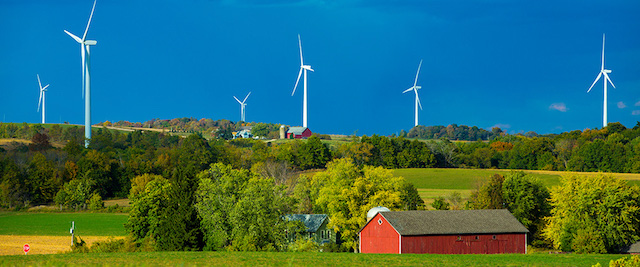by Jim Efstathiou Jr. and Christopher Martin, Bloomberg
Calm winds are hurting U.S. wind power producers.
Unusually still weather in the upper Midwest and Great Plains in late 2018 has already taken a bite out of earnings at NextEra Energy Inc. and Avangrid Inc., which both operate large wind farms. Other wind generators have yet to report fourth-quarter results, including Pattern Energy Group Inc., TerraForm Power Inc. and Clearway Energy Inc.
Blame El Nino. While it’s a relativity weak one, the El Nino that’s formed in the equatorial Pacific Ocean still has enough heft to temper the gusts that typically roar through the U.S.’s wind belt and cause turbines to spin with abandon. In fact, the last 20 El Ninos have calmed winds across Minnesota, Wisconsin and beyond, said Todd Crawford, chief meteorologist at the Weather Company.
“This is typical with El Nino events,” Crawford said.
Avangrid Falls
The problem was especially vexing for Avangrid. The New Haven, Connecticut-based company reported earnings-per share of 38 cents Feb. 19, well below the 58 cents expected by analysts. Chief Executive Officer James Torgerson said the results stemmed in part from “lower than expected wind.” The shares fell the most in three years.
Wind turbines in the upper Midwest, home to many of Avangrid’s farms, produced far less power in the fourth quarter even as new turbines were installed in the region. Wind production sank to an average of about 6,700 megawatt hours, down from 7,800 megawatt hours in the fourth quarter of 2017, according to the Midcontinent Independent System Operator Inc.
Avangrid said it has now changed the way it forecasts wind output to look at turbine performance over the life of generators, spokeswoman Zsoka Mcdonald in an email. In the past, the company used performance from 2011 through 2014, a period with higher output. The changes reduced Avangrid’s 2019 earnings projection by about 8 cents a share.
Hard to Forecast
Wind is hard to forecast — especially in comparison to the sun. Fitch Ratings, in a report last month, said it found that “wind projects more often underperformed against expectations” than solar farms.
It’s not just the upper Midwest with the doldrums. In the Southwest Power Pool, which stretches from Oklahoma to the Dakotas, output from wind turbines declined in the fourth quarter to an average of about 8,100 megawatt hours, down from 8,200 megawatt hours a year earlier, according to grid operator data.
NextEra, one of the world’s largest solar and wind companies, also reported fourth-quarter results that fell short of analysts’ expectations. Chief Financial Officer John Ketchum said on a Jan. 25 call with analysts that the company was hurt by a “particularly poor fleet-wide wind resource, which was the lowest fourth quarter on record over the last 30 years.”





